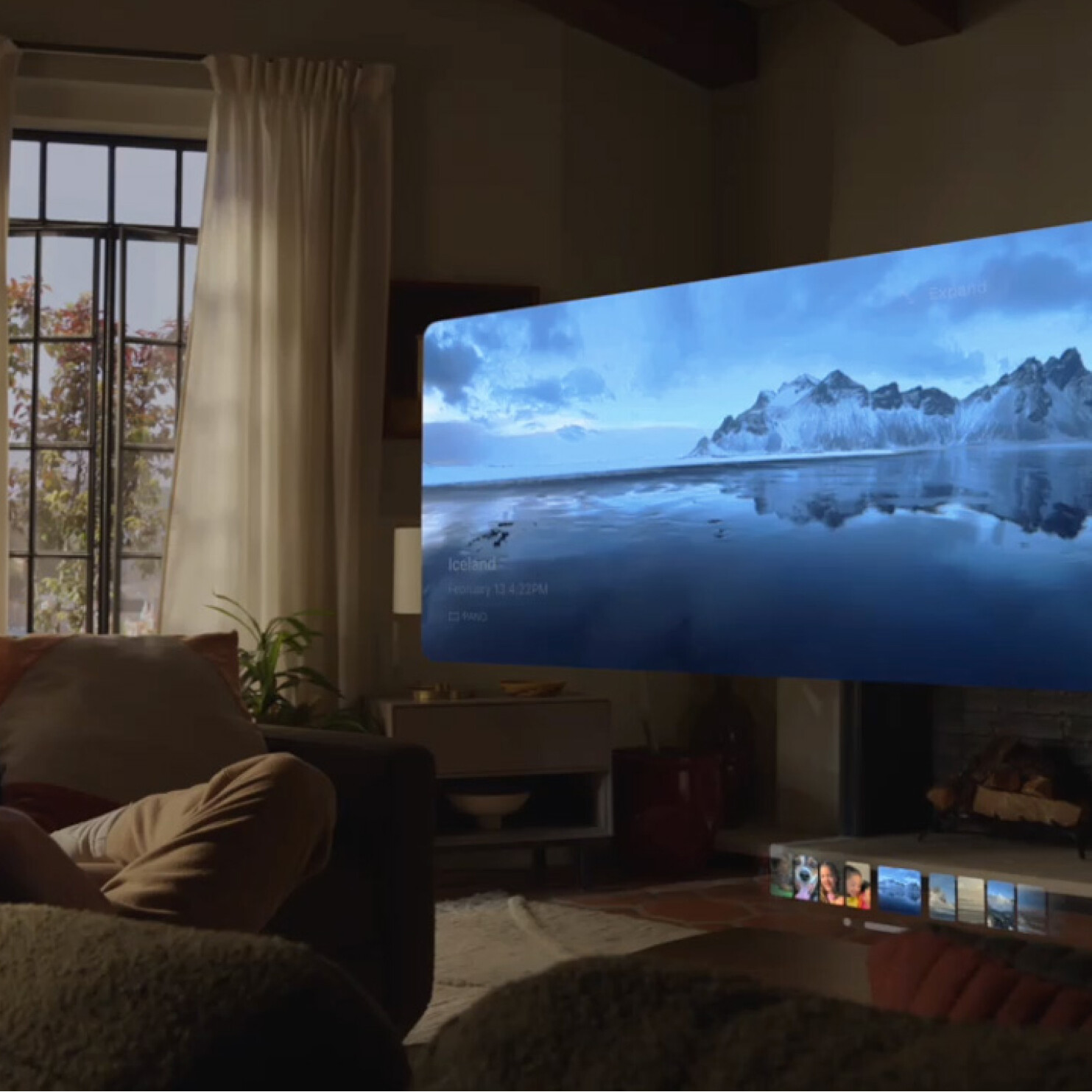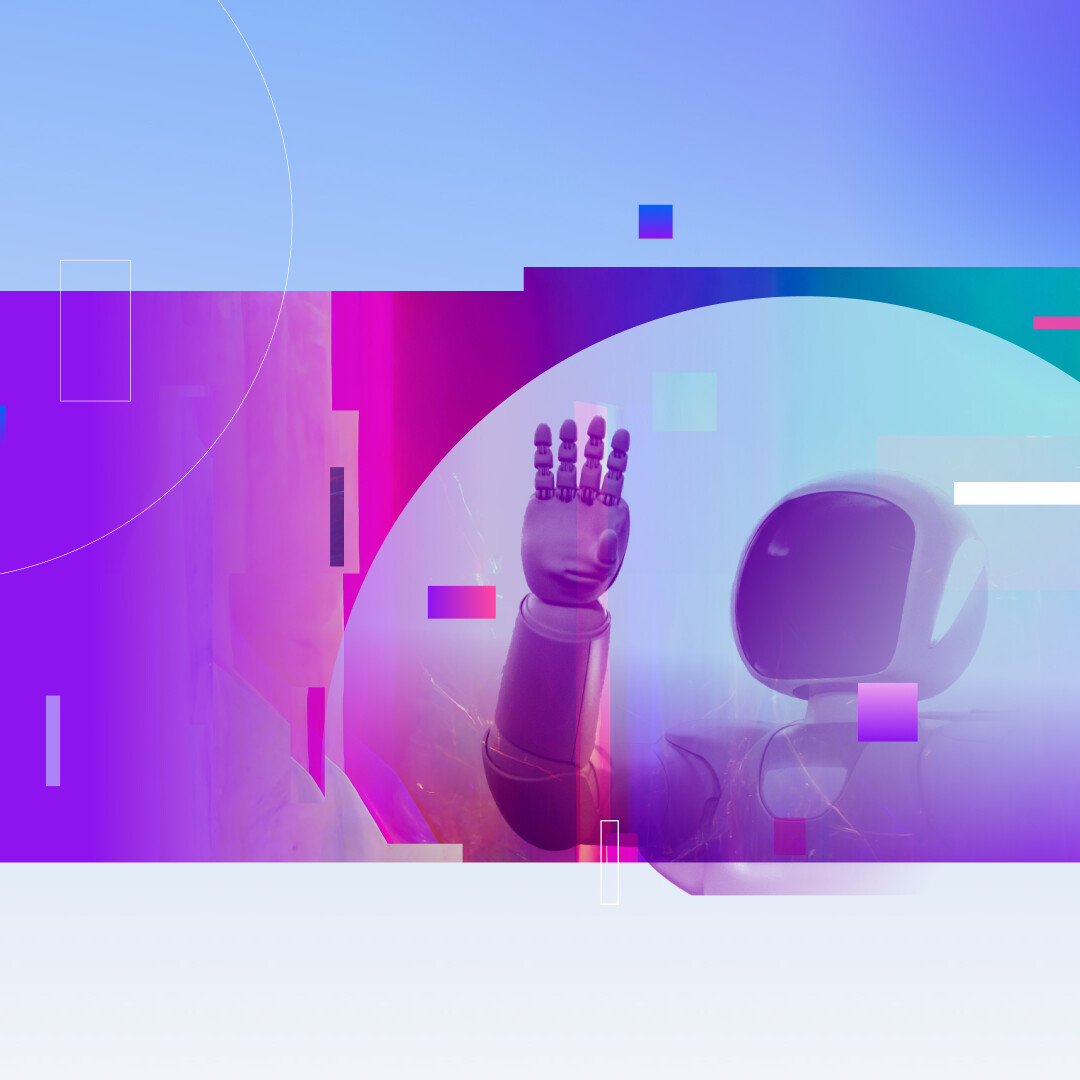Rapid advancements in AI are evolving the human and machine relationship. Embracing ethical design is crucial for fostering more conscious innovation that positively impacts businesses and society.
Technology has become an indispensable part of our daily lives, influencing our communication, information consumption, entertainment choices, transportation methods, and societal systems. The rapid advancement of AI is bringing it closer to “consciousness”. Soon, autonomous systems and machine intelligence will rival or even surpass human cognitive abilities, exerting significant influence on future global outcomes.
With tremendous power comes an immense responsibility. Ethical design has now become an indispensable imperative for companies and industries, demanding greater attention than ever before.
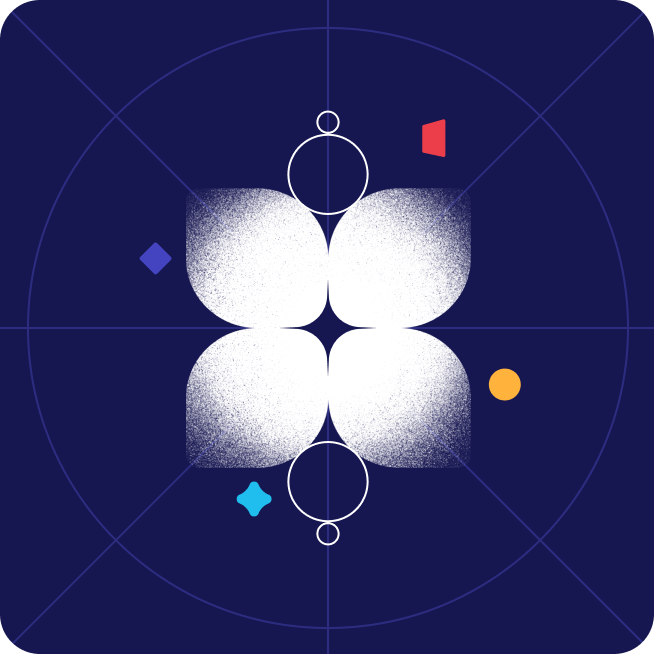
Being More Conscious
For over 20 years, we’ve been an advocate for human-centered experiences with technologies that enhance people’s lives. Ethical design is at the core of our business. We research changing consumer behaviors and values to guide companies to humanize their digital product experiences to benefit people and create positive impact in the world.
Our research in recent years has revealed a growing consciousness among consumers about the effects of technology on their lives. We see individuals suffering from social isolation despite being more connected than ever before, how technology is straining focus by demanding more time, attention, and engagement, and how the constant drive for advancement is leaving some behind or neglected.
To address new concerns and capabilities, we established our practice of Conscious Experience Design— a dedicated discipline focused on bringing a mindful approach to product design and innovation that better aligns new technology with fundamental human ethics. In this article, we’ll explore some fundamentals and frameworks to help establish and guide ethical design practices in your organization.
Living Your Values
There are many nuanced definitions and philosophical differences within the study of ethics, but we define ethics as a framework for upholding values. Values, simply stated, are what a company or customer values. Valuing something means putting it before other things. Ethics are the guides that help your company live its values —putting values into actions throughout your organization and through your products.


It's Good Business
A cultural shift is underway, driven by newer generations remove using their purchasing power to support companies that openly share and uphold their values. A recent study found that nearly 80% of Gen Z respondents prioritize diversity and inclusion in brands. Another found that 43% of global consumers prefer socially responsible organizations, even if they are more expensive. Our FutureView Report highlights consumers’ increasing focus on social well-being, favoring sustainable practices over toxic consumption patterns. Notably, 50% of Gen Z buyers have reduced overall consumption, and 45% avoid brands that do not align with good citizenship and environmental values.
Companies that prioritize environmental and societal concerns attract and retain more customers, and improve their overall business performance.
Holistic Guidance
Despite the increased awareness surrounding ethical design in recent years, many companies still struggle to know how to implement it within their organizations. Accessibility often serves as the initial focus, prompting teams to retrofit their experiences to meet requirements, but this approach tends to be narrow and implemented late in the process. To truly embed ethical perspectives, they must be incorporated into the business and design process from the very beginning, extending through launch and beyond.
A scalable ethics framework can help distributed teams all work independently, but cohesively, to bring value-driven products to market. Ethical design may seem like a daunting task, but we often find that it can be achieved by just asking the right questions remove at the right time in the process.
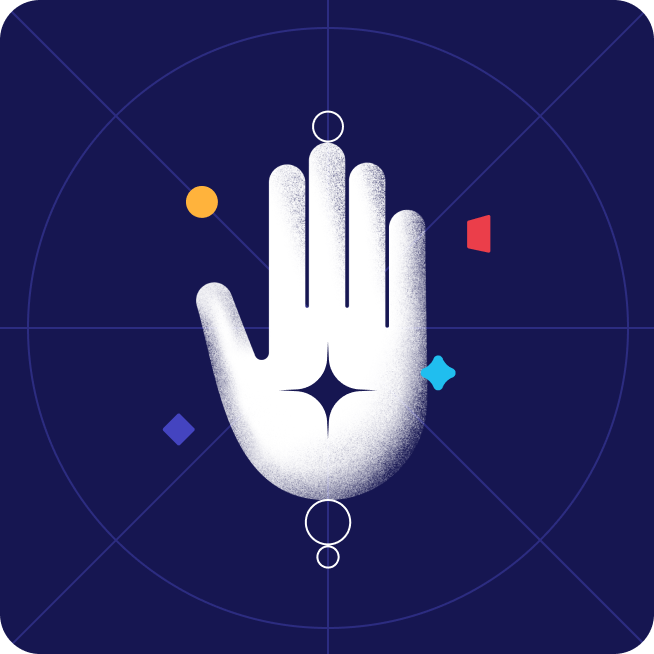
Frameworks for Positive Change
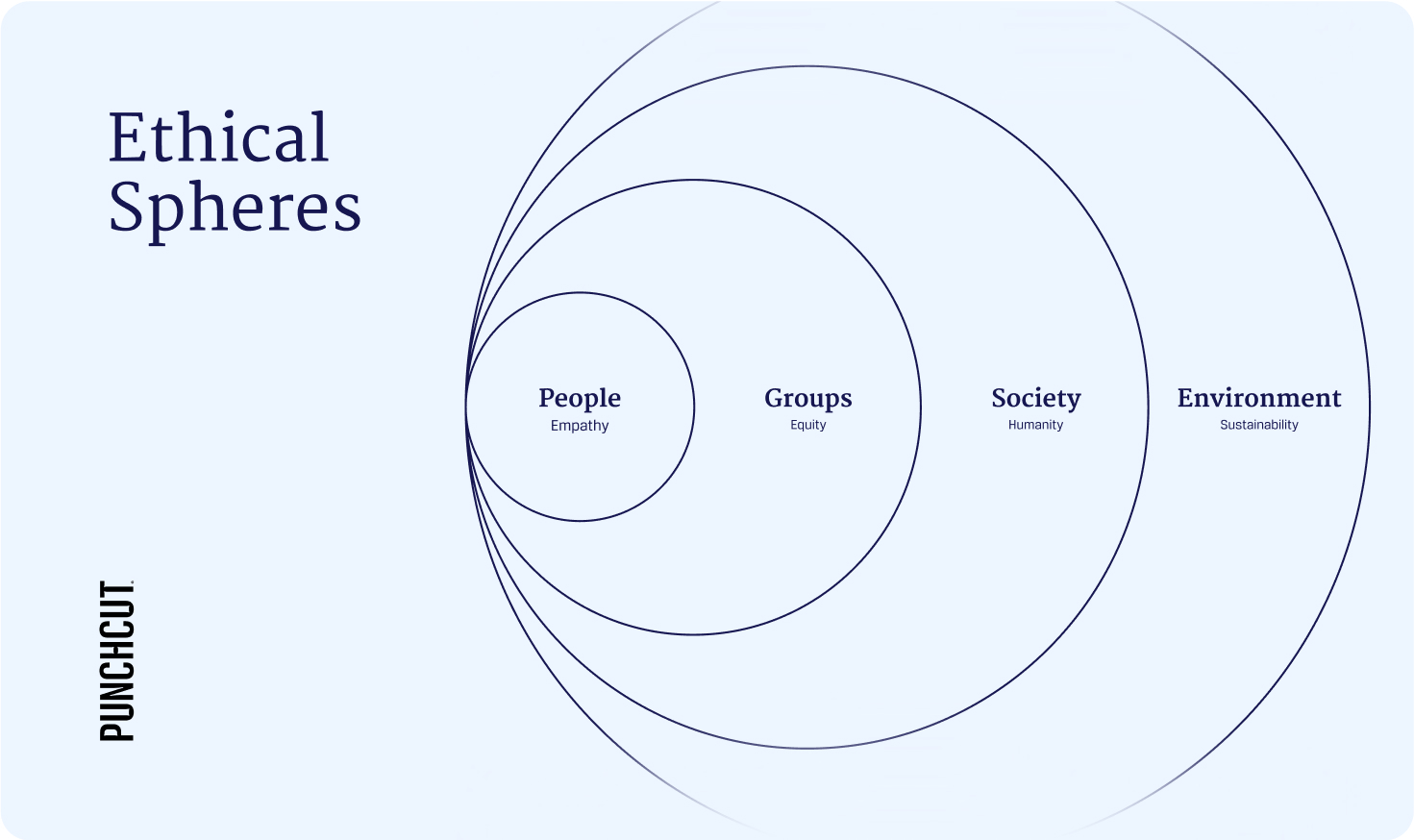
Ethical Spheres
When establishing an ethical design practice, it is crucial to consider the different perspectives and dimensions of influence. This framework takes a holistic approach to ethical design allowing you to thoroughly assess the scale of influence for specific audiences or entities, and enabling you to scrutinize your decisions more effectively. Breaking down possibilities into discrete categories helps organize ideas into smaller, more manageable components.
People: How will our product experience affect individuals?
Groups: How will our product affect people within groups (families, neighbors, companies, etc)
Society: How will our product experience affect communities and humanity as a whole?
Environment: How will our product experience affect sustainability for our world?
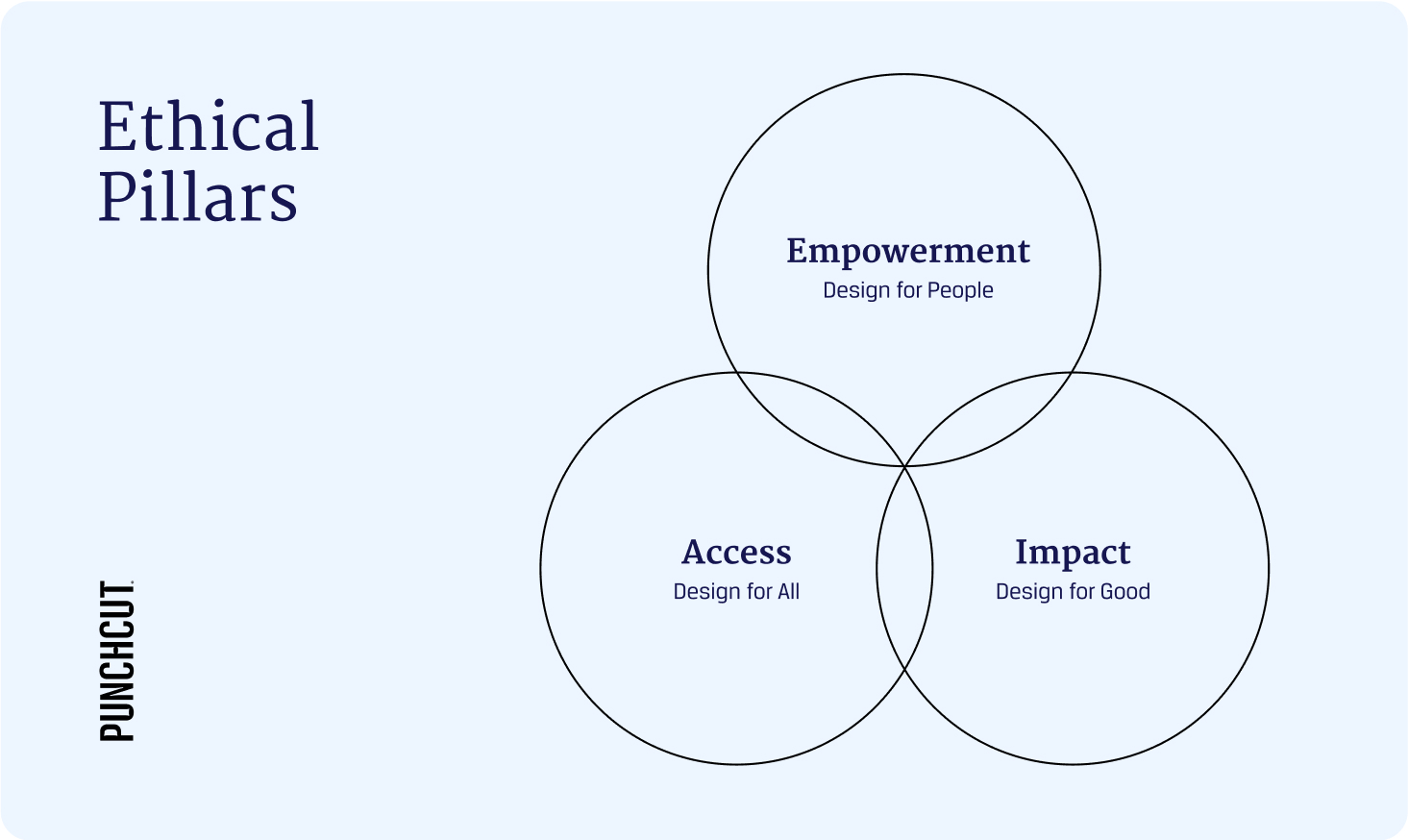
Ethical Pillars
Our second framework focuses thinking on three key principles for positive outcomes. While there are many ethical design frameworks at play in the market today, we have found these three basic lenses enable teams to easily remember core principles and overlay key questions and exercises into their design or product development efforts.
AccessEnabling Usability for All
Ethical design champions accessibility, ensuring that everyone, regardless of their abilities or resources, can readily utilize and benefit from our creations. By nurturing inclusivity, unbiased design, and consideration for diverse backgrounds, we expand access across various contexts.
Key Questions:
- Are we accommodating a broad spectrum of users, or are we catering to a specific group?
- Is our design excluding potential users?
- Are we factoring in varying levels of ability?
- Have we acknowledged and addressed inherent disadvantages some users might face?
In Practice
Imagine creating a new online learning platform. Ethical design principles would ensure that the platform is accessible to people with different abilities. This could involve providing closed captioning for videos, alt text for images, and adaptable font sizes for visually impaired users. By implementing these features, the platform becomes usable and beneficial to a broader audience, regardless of their abilities.
ImpactCultivating Positive Outcomes
Ethical design centers on fostering positive and sustainable impacts. By reducing resource consumption, adopting sustainable practices, and ensuring transparency in functionality, we guarantee that our designs contribute to the greater good while minimizing harm.
Key Questions:
- Does this design bring positive contributions to humanity?
- Is our solution aligned with principles of integrity and honesty?
- Does our design respect users’ time and resources?
- Are we transparent in explaining how our designs work?
In Practice
Consider developing a mobile app for food delivery. Ethical design in this case would involve implementing features that reduce food waste. The app could provide users with the option to order smaller portions or to opt for sustainable packaging materials. By minimizing waste and promoting responsible consumption, the app contributes to a positive impact on the environment and encourages users to make sustainable choices.
EmpowermentElevating Human Potential
Ethical design revolves around empowering users, transcending mere equality to elevate human abilities and potential. It involves enabling individuals to reach their aspirations and accomplish extraordinary feats, enriching humanity beyond individual limits.
Key Questions:
- Does this solution foster innovation and encourage positive change?
- Are we addressing immediate needs while also anticipating future requirements?
- Can users tailor their experience based on their unique needs?
- Does this design flexibly adapt to diverse usage contexts and environments?
In Practice
Imagine designing a fitness app that not only tracks exercise but also provides personalized coaching based on individual goals and progress. Ethical design principles would be realized by empowering users to set their fitness targets, offering guidance tailored to their abilities, and recognizing milestones. This app wouldn’t just provide equal opportunities for fitness tracking; it would empower users to achieve their fitness aspirations beyond what they might have achieved on their own.
Implementing An Ethical Framework
Ethical design thrives through collaboration. It flourishes when diverse perspectives, shared experiences, and valuable insights are exchanged within mixed teams. Human-centered products, by their nature, are inclusive and welcome contributions from a wide range of individuals. Embracing inclusive approaches in envisioning, conceptualizing, and testing helps minimize unintended bias.
Companies should purposefully cultivate teams that encompass diverse characteristics, backgrounds, and experiences. Establishing councils, committees, and community forums can effectively broaden mindsets and rigorously evaluate new ideas and features to maximize positive impact. It is crucial to recruit and retain an inclusive team that wholeheartedly embraces these principles, and to foster a supportive environment where everyone can openly and share their lived experiences with their peers.
Ultimately, the success of ethical design depends on how well teams take values to heart and rigorously apply them to the design process. With the evolution of tech and the shifts in society, we will continue to see technology become more capable than ever and it will be critical to ethically design a future for humans that’s positive, sustainable and creates meaningful change.
A Punchcut Perspective
Eric Liaw, Ken Olewiler, and Nate Cox
Graphics by Paige Cameron, Emily Finey, and Carrie Doung
© Punchcut LLC, All rights reserved.
